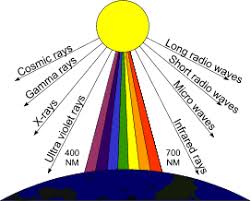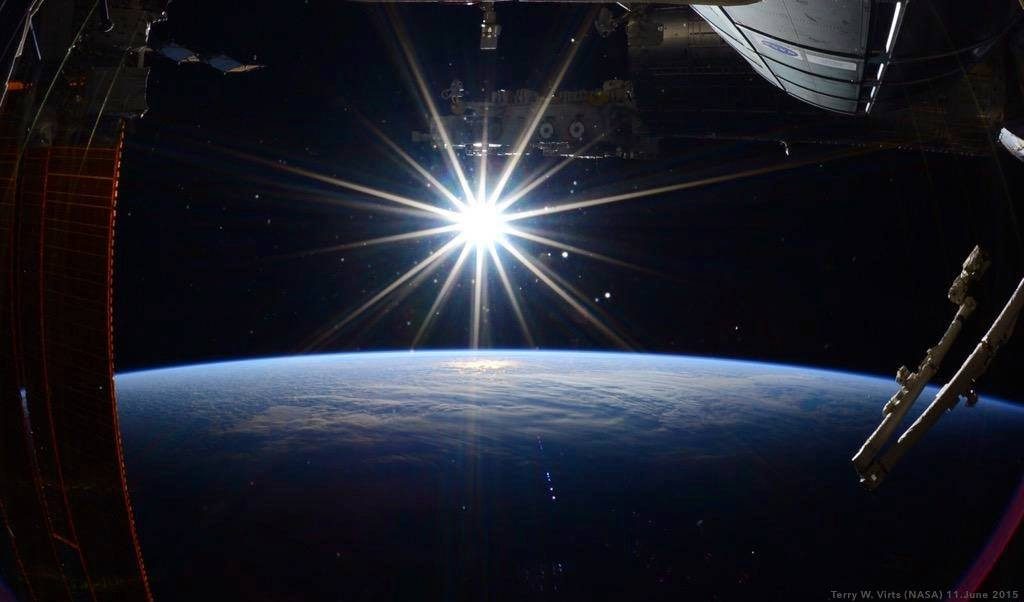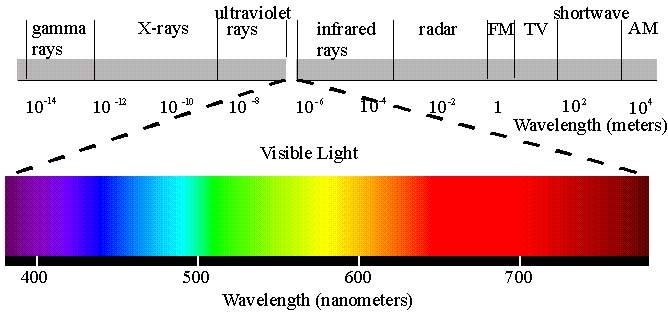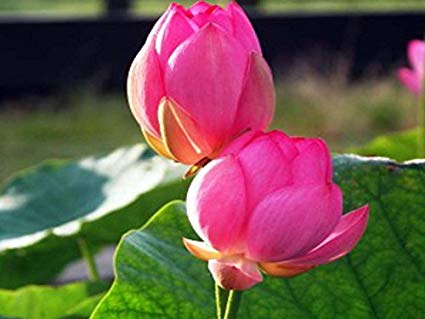Aditya Hrudayam Series Week 23
Shloka Taatparyam Shloka 18
नम उग्राय वीराय सारङ्गाय नमो नमः।
नमः पद्मप्रबोधाय मार्ताण्डाय नमो नमः॥ 18 ॥
Nama ugrāya vīrāya sāraṅgāya namo namaḥ ।
namaḥ padmaprabodhāya mārtāṇḍāya namo namaḥ ॥ 18 ॥
Meaning:
नम उग्राय वीराय (Nama ugrāya vīrāya)
Salutations to Him who is fierce and terrible (to the sinners) and who is brave and eminent.
सारङ्गाय नमो नमः (sāraṅgāya namo namaḥ)
Salutations again and again to the one who is polychromatic (made of all colors).
Wait…. what?? Is he not yellow or orange??
No. He is not. Here is a very interesting scientific correlation to prove what the Sage said is right.
It is a common misconception that Sun is yellow or Red. He appears yellow/orange/Red at sunrise or sunset when he is closer to the horizon. But Sun is essentially all colors mixed together. The Sun emits a lot of energy in the visible range. In wavelength scale it is from 390 nm to 700 nm, and when you translate it to colors, you get all colors from violet to red, just as we see them in the rainbow. When you mix all those colors together you get white, and that is why white is the true color of the Sun. But seen from the Earth, the Sun can have many colors: from whitish-yellowish when it is high above the horizon, to red when it sets or rises. This is because the shortest wavelengths (that we see as different shades of blue) are being scattered by the Earth’s atmosphere, coloring the sky blue. And when our eyes combine all those rainbow colors, except the blue ones, the Sun’s color our eyes see is yellowish. The lower toward horizon the Sun is, the more blue is scattered and the Sun’s color shifts to red. To further illustrate this I have posted two pictures of the Sun taken from Space. The first one is a Space Selfie taken by astronaut Aki Hoshide with the Sun to his left. The second is the picture of Sun as seen from the International Space Station photographed by Terry W. Virts (NASA Astronaut). In both these pictures look how the Sun appears white.
नमः पद्मप्रबोधाय (namaḥ padmaprabodhāya)
Salutations again and again to the one who makes the lotus flowers bloom
Thought it would be interesting to add this scientific note here:
Do you know how the flowers know when to bloom??
Flowers know when to bloom because of a gene named Apetala1. Plants blossom at different times because several factors, including the weather, temperature and the amount of sunlight. Information about these conditions is relayed to Apetala1, which activates when it senses that the timing is right to commence flowering!!
मार्ताण्डाय नमो नमः (mārtāṇḍāya namo namaḥ)
Salutations again and again to Martanda. Martanda is another name for Sun. We can also interpret this to be the huge bird in the sky.
नम – Nama – salutations
उग्राय – ugrāya – fierce, furious
वीराय – vīrāya – heroic, courageous
सारङ्गाय – sāraṅgāya – of variegated colors, polychromatic
नमो नमः – namo namaḥ – Salutations again and again
नमः – namaḥ – Salutations
पद्म – Padma – Lotus
प्रबोधाय – prabodhāya – who causes to blossom
मार्ताण्डाय – mārtāṇḍāya – bird in the sky, Sun God
नमो नमः – namo namaḥ – Salutations again and again





